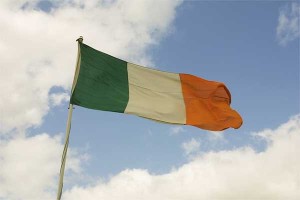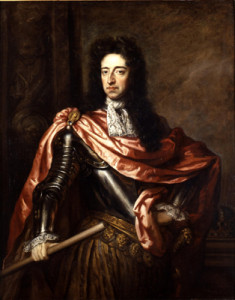Irish flag’s colors have meaning
 People marked St. Patrick’s Day in many ways: eating corned beef and green cabbage, drinking green beer, and “the wearin’ o’ the green.” So why does the national flag of Ireland have two colors in addition to the hue that has traditionally represented that country?
People marked St. Patrick’s Day in many ways: eating corned beef and green cabbage, drinking green beer, and “the wearin’ o’ the green.” So why does the national flag of Ireland have two colors in addition to the hue that has traditionally represented that country?
The World Factbook describes the Irish flag as having “three equal vertical bands of green, white and orange,” and then notes that “officially the flag colors have no meaning.”
That would be very unusual for any nation’s standard. The vast majority of flags, if not all, are made up of colors and symbols that represent something significant to the people waving them. That’s what flags are for. The U.S. flag, for example, has 13 stripes for the original colonies and a star for each state, thus showing both the origin and growth of the nation.
Surely, Ireland doesn’t want to be confused with two other “I” nations. As the Factbook points out, Eire’s strips match those of the Ivory Coast banner, which “has the colors reversed,” as well as Italy’s flag, which substitutes red for orange.
Ireland’s standard evolved in the 19th century, when the emerald island was part of the British Empire. According to the Irish government’s website, the colors shifted at times but generally had religious meanings: green for Catholics, orange for most Protestants and at one time blue for Presbyterians.

The use of orange derived from William of Orange, a Dutchman who was king of England from 1689 to 1702. A Protestant, he supplanted James II, a Catholic. Orange was a place name in what is now Holland. William’s succession to the British throne was made possible through his wife Mary’s family line.
When Ireland attained its independence in the 20th century, the flag’s colors were standardized with special emphasis put on never substituting yellow for orange.

The World Factbook suggests that the colors do have meanings that are popularly accepted, even though they are not officially sanctioned. The “common interpretation,” notes the Factbook, “is that green represents the Irish nationalist (Gaelic) tradition,” while the orange stands for “the Orange tradition” (i.e. Protestant).
The white, located in between the two other colors, “symbolizes peace between the green and orange,” i.e. between the Catholics and Protestants.
